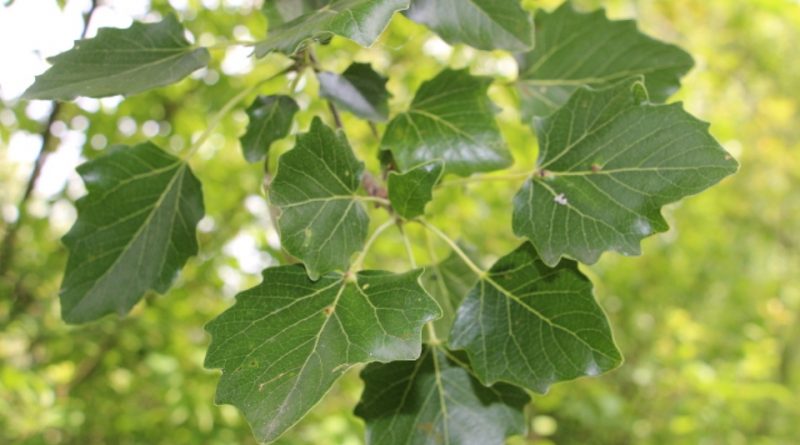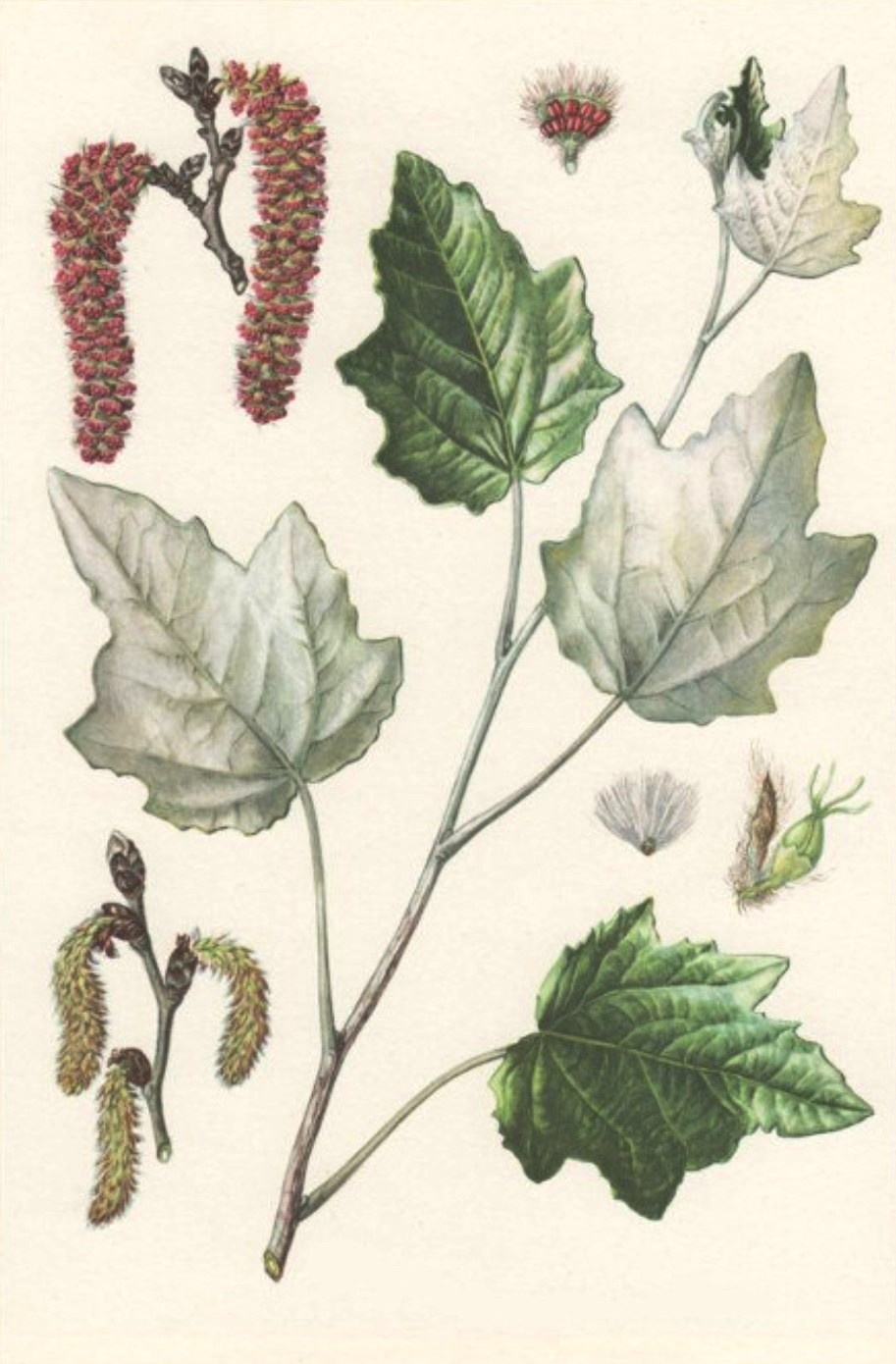Populus alba
Populus alba
The White Poplar (Populus alba L., 1753) is an arboreal species belonging to the Salicaceae family.
Systematic –
From a systematic point of view it belongs to the Eukaryota Domain, Kingdom Plantae, Magnoliophyta Division, Magnoliopsida Class, Salical Order, Salicaceae Family and therefore to the Populus Genus and to the P. alba species.
Etymology –
The term Populus comes from the Greek πάλλω pállo to jump, shake, tremble: for the behavior of the leaves under the action of the wind. The specific dawn epithet refers to the white (opaque) color referred to the flowers, the bark, etc.
Geographic Distribution and Habitat –
The white Poplar is a plant native to Spain and Morocco and whose distribution area extends between southern Europe, North Africa and western Asia. In Italy it is easily found along the banks of rivers and lakes, from the plain up to about 1,500 m asl Its typical habitat is that of areas that remain humid all year round but not flooded, where we find it associated with Alder, Ash, Olmo and Salix alba. It is a thermophilic and salt-resistant species.
Description –
The Populus alba is a tree that can even exceed 35 meters in height, with rounded crown and robust stem covered by bark, smooth, greenish white color that subsequently cracks and becomes wrinkled in the basal part, where it becomes blackish. The leaves are deciduous, alternate, provided with petiole, with round-ovate or palmate lobes with 5 lobes, with the whitish lower page.
It is a dioecious plant with male and female flowers gathered in catkins, which appear before the leaves. The fruits are glabrous capsules in catkins hanging from the branches that in spring release feathery seeds carried by the wind.
Cultivation –
The white Poplar is a plant that for its cultivation prefers alluvial soils where the propagation is mostly by vegetative way, through cuttings taken by the shoots of 1-2 years slightly ramified. The propagation by seed is not practiced because as in the case of willows also the seeds of the white Poplar have a rather short life. The plant can be done with specimens of 1-2 years, in winter, but away from frosts. The plants should be kept in water 4-5 days before they are planted and the soil should be worked in depth for at least 80 cm, better 100 being able.
The Populus alba can be cultivated for different purposes, from the intensive one, as a fast growing plant for industrial production, with an ornamental plant or for road trees.
For intensive cultivation, with rapid growth, fertilization, irrigation and pesticide treatments must be provided. This type of cultivation requires shifts of 15-25 years. A marketable plant will then reach 25-35 cm in diameter of the stem that will be free of defects for at least 5 m in height. Furthermore, to obtain plants with columnar stems, it is necessary to proceed with cutting the branches and high scaffolding of the plant.
Uses and Traditions –
The poplars are essential plants in the action of consolidation of river banks, also in relation to the wide extension of the root system that branches off from the mother plant for more than twenty meters. Moreover, it is often artificially planted in rows for the use of timber, drastically altering the landscape. The wood of the white Poplar is whitish in color and is soft with mediocre quality and is used for the construction of packing boxes and especially in the paper industry but also for the production of cellulose, plywood and furniture of little value.
It is also widely used as an ornamental plant and in road trees for its beautiful silver-white hair; for this use the most used cultivars are: Populus alba cv. Pyramidalis of Turkestan.
Preparation Mode –
The dried bark, containing tannin and salicin, like that of other poplars, has a febrifugal action and can therefore be used for such purposes.
Guido Bissanti
Sources
– Acta Plantarum – Flora of the Italian Regions.
– Wikipedia, the free encyclopedia.
– Treben M., 2000. Health from the Pharmacy of the Lord, Advice and experience with medicinal herbs, Ennsthaler Publisher
– Pignatti S., 1982. Flora d’Italia, Edagricole, Bologna.
– Conti F., Abbate G., Alessandrini A., Blasi C. (edited by), 2005. An annotated checklist of the Italian vascular flora, Palombi Editore.
Warning: Pharmaceutical applications and alimurgical uses are indicated for informational purposes only and do not in any way represent a medical prescription; there is therefore no liability for their use for curative, aesthetic or food purposes.


